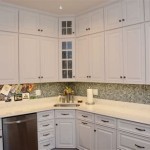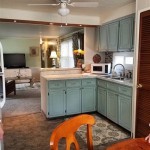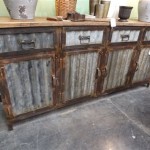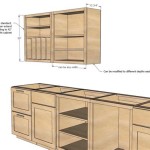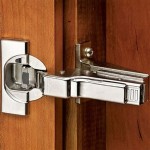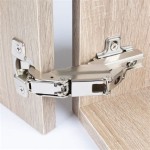What Is The Cost Of Kitchen Cabinets?
Kitchen cabinets represent a substantial investment in any kitchen renovation project. Understanding the factors that influence the price of kitchen cabinets is essential for homeowners seeking to create a functional and aesthetically pleasing space without exceeding their budget. The cost of kitchen cabinets is not a fixed number; rather, it is a nuanced figure determined by a complex interplay of materials, construction quality, style, size, and installation requirements. This article provides a comprehensive overview of the key elements that contribute to the overall cost of kitchen cabinets.
The price range for kitchen cabinets can vary dramatically, from affordable stock options to custom-designed, high-end solutions. Stock cabinets, typically pre-fabricated and readily available at home improvement stores, represent the most budget-friendly choice. Semi-custom cabinets offer a middle ground, allowing for some modification of standard sizes and finishes. Custom cabinets, crafted to exact specifications, offer the ultimate in design flexibility but command the highest price. Determining the appropriate cabinet type for a given project necessitates a careful evaluation of budget constraints, design preferences, and functional needs.
It is crucial to understand that the price of the cabinets themselves is not the only expense to consider. Installation costs, hardware selections, and potential modifications to the existing kitchen layout can significantly impact the total project budget. Therefore, a holistic approach to planning and budgeting is essential for a successful kitchen renovation.
The Impact of Materials on Cabinet Costs
The materials used in constructing kitchen cabinets are a primary determinant of their cost. Different wood species, composite materials, and finishes carry varying price tags, reflecting their inherent properties, durability, and aesthetic appeal. The choice of material should be carefully considered in light of both budget and design goals.
Solid wood cabinets are generally considered the most durable and aesthetically pleasing option, but they also represent the highest cost. Common wood species used include maple, oak, cherry, and hickory. Maple is known for its smooth grain and ability to accept paint finishes well, while oak offers a more pronounced grain pattern and is typically stained. Cherry provides a rich, reddish-brown hue and is often chosen for its elegant appearance. Hickory is a very strong and durable wood with a distinct grain pattern.
The specific type of wood used within a solid wood cabinet also affects the price. For example, a cabinet constructed entirely of select grade cherry wood will be significantly more expensive than a cabinet made of a more common wood species like maple. The grading of the wood refers to the number of knots and imperfections present, with higher grades having fewer flaws and a more uniform appearance.
Plywood is a common alternative to solid wood, often used for cabinet boxes due to its stability and resistance to warping. High-quality plywood, with multiple layers and a smooth surface, is preferable to lower-grade options. Plywood boxes are often more stable than solid wood, especially in humid environments.
Particleboard and medium-density fiberboard (MDF) are composite materials that are often used in less expensive cabinets. Particleboard is made from wood chips and resin, while MDF is made from wood fibers and resin. Both are relatively inexpensive but are less durable than solid wood or plywood, and they are also more susceptible to damage from moisture. However, MDF provides a very smooth surface that is excellent for painting, and it is less prone to cracking or warping than solid wood.
The finish applied to the cabinet also impacts the cost. Painted cabinets, stained cabinets, and cabinets with specialty finishes (e.g., glazing, distressing) all have different labor and material costs associated with them. Painted finishes require careful surface preparation and multiple coats of paint, while stained finishes highlight the natural grain of the wood. Specialty finishes can add depth and character to the cabinets but require specialized techniques and expertise.
Laminate cabinets are a cost-effective option that offers a wide range of colors and patterns. Laminate is a thin layer of plastic that is bonded to a substrate, such as particleboard or MDF. Laminate cabinets are durable and easy to clean, but they do not have the same aesthetic appeal as solid wood cabinets.
Understanding Cabinet Construction and Style
The way a cabinet is constructed plays a significant role in its overall cost and longevity. Dovetail joints, solid wood frames, and soft-close hinges are indicators of quality construction that contribute to increased durability and value. Cabinet style, including door design and ornamentation, also influences the price.
Framed cabinets, also known as face-frame cabinets, feature a frame around the front of the cabinet box. This frame provides additional strength and stability, and it also allows for a wider range of door styles and hardware options. Framed cabinets are typically more expensive than frameless cabinets.
Frameless cabinets, also known as European-style cabinets, have a clean, contemporary look with no frame around the cabinet box. This construction method maximizes storage space and provides easy access to the cabinet interior. Frameless cabinets are typically less expensive than framed cabinets but may require more precise installation.
Door styles range from simple flat-panel designs to more elaborate raised-panel designs with intricate detailing. The complexity of the door design directly impacts the cost, with more ornate designs requiring more labor and materials to produce.
The type of hardware used on the cabinets, such as hinges and drawer slides, also affects the cost. Soft-close hinges and drawer slides, which prevent slamming and provide smooth operation, are a popular upgrade that adds to the overall expense. Similarly, decorative hardware, such as knobs and pulls, can range in price from inexpensive mass-produced options to high-end designer pieces. The choice of hardware is both an aesthetic and functional consideration.
The level of customization also influences the price. Stock cabinets, which are pre-fabricated in standard sizes, are the most affordable option. Semi-custom cabinets allow for some modifications to standard sizes and finishes, while custom cabinets are built to order and can be tailored to any size, shape, or style. Custom cabinets offer the ultimate in design flexibility but command the highest price.
The internal features of the cabinets, such as pull-out shelves, spice racks, and drawer dividers, can also add to the cost. These features enhance functionality and organization but require additional materials and labor to install.
Installation Costs and Additional Considerations
Beyond the cost of the cabinets themselves, installation charges represent a significant portion of the overall project budget. The complexity of the installation, the need for any modifications to the existing kitchen layout, and the geographic location all influence installation costs.
Professional installation is generally recommended to ensure proper alignment, secure mounting, and a flawless finish. Cabinet installers typically charge by the linear foot or by the cabinet, and the price can vary depending on the experience and expertise of the installer.
The removal and disposal of existing cabinets is also a factor to consider. If the old cabinets need to be removed and disposed of, this can add to the overall cost. Some contractors include this service in their installation fee, while others charge it separately.
Modifications to the existing kitchen layout, such as moving plumbing or electrical lines, can significantly increase the cost of the project. These modifications require specialized skills and permits, and they can also add to the timeline of the renovation.
The geographic location also plays a role in installation costs. Labor rates and material prices can vary significantly depending on the region. Metropolitan areas typically have higher labor rates than rural areas.
Permits may be required for kitchen renovations, especially if structural changes or modifications to plumbing or electrical systems are involved. The cost of permits can vary depending on the municipality. It is important to check with the local building department to determine if permits are required for the project.
Finally, it is important to factor in a contingency fund for unexpected costs. Renovations rarely go exactly as planned, and it is always wise to have a buffer in the budget to cover unforeseen expenses, such as hidden damage or unexpected repairs.
In summary, the cost of kitchen cabinets is determined by a complex interplay of factors, including materials, construction quality, style, size, and installation requirements. A thorough understanding of these factors is essential for homeowners seeking to create a functional and aesthetically pleasing kitchen within their budget. Careful planning, realistic budgeting, and professional installation are key to a successful kitchen renovation project.

What Is The Average Kitchen Cabinet Cost

What Does An Average Kitchen Cost Superior Cabinets

What Is The Average Kitchen Cabinet Cost

How Much Does It Cost To Replace Your Kitchen Cabinets

What Do Kitchen Cabinets Cost Tips To Stay In Budget

How Much Do New Cabinets Cost Bkc Kitchen And Bath

What Is The Average Kitchen Cabinet Cost

Kitchen Cabinet S Pictures Options Tips Ideas

Cost Of Kitchen Cabinets Estimate Cabinet S 2024 Remodeling Calculator

Modular Kitchen Cost Per Sq Ft How Much Should You Budget
Related Posts

